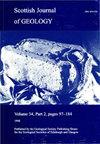The geological work of the Scottish National Antarctic Expedition, 1902 – 04
IF 0.5
4区 地球科学
Q4 GEOLOGY
引用次数: 3
Abstract
The Scottish National Antarctic Expedition (1902 – 04) made the first topographical survey and geological assessment of Laurie Island, one of the South Orkney Islands. The expedition's surgeon and geologist, J. H. H. Pirie, provided competent geological descriptions but these were largely overshadowed by his misidentification of an obscure plant fossil as a graptolite. Erroneous confirmation by eminent British palaeontologists led to Triassic rocks being regarded as Lower Palaeozoic for fifty years. The mistake arose from the familiarity of all concerned with the geology of the Scottish Southern Uplands: they were led astray by the preconception that, as in Scotland, deformed ‘greywacke–shale’ successions would contain Lower Palaeozoic fossils. Other, more successful aspects of the expedition's geological investigations are less well known. Fossils acquired in the Falkland Islands expanded that archipelago's poorly known Devonian brachiopod fauna, but arguably the most important palaeontological discovery lay unrecognized for ten years. A limestone block dredged from the bed of the Weddell Sea contained Early Cambrian archaeocyath fossils which, had they been promptly identified, would have been the first record of this important Antarctic palaeofauna. Instead, the Weddell Sea material complemented fossils recovered on the opposite, Ross Sea side of the Antarctic continent during Shackleton's British Antarctic Expedition (1907 – 09).苏格兰国家南极考察队的地质工作,1902 - 2004
苏格兰国家南极考察队(1902年 – 04)对南奥克尼群岛之一的劳里岛进行了首次地形测量和地质评估。探险队的外科医生兼地质学家J·H·H·皮里提供了合格的地质描述,但这些描述在很大程度上被他将一块不知名的植物化石误认为笔石所掩盖。英国著名古生物学家的错误确认导致三叠纪岩石被认为是下古生代长达五十年。这个错误源于所有相关人员对苏格兰南部高地地质的熟悉:他们被一种先入为主的观念所误导,即与苏格兰一样,变形的“杂砂岩-页岩”序列将包含下古生代化石。探险队地质调查中其他更成功的方面则鲜为人知。在福克兰群岛获得的化石扩大了该群岛鲜为人知的泥盆纪腕足动物群,但可以说,最重要的古生物学发现在十年内一直未被发现。从威德尔海床挖出的一块石灰岩中含有早寒武纪古生物化石,如果能及时发现,这将是这一重要南极古动物群的第一个记录。相反,威德尔海的物质补充了沙克尔顿英国南极探险(1907年)期间在南极大陆罗斯海对岸发现的化石 – 09)。
本文章由计算机程序翻译,如有差异,请以英文原文为准。
求助全文
约1分钟内获得全文
求助全文
来源期刊

Scottish Journal of Geology
地学-地质学
CiteScore
1.70
自引率
0.00%
发文量
10
审稿时长
>12 weeks
期刊介绍:
Although published only since 1965, the Scottish Journal of Geology has a long pedigree. It is the joint publication of the Geological Society of Glasgow and the Edinburgh Geological Society, which prior to 1965 published separate Transactions: from 1860 in the case of Glasgow and 1863 for Edinburgh.
Traditionally, the Journal has acted as the focus for papers on all aspects of Scottish geology and its contiguous areas, including the surrounding seas. The publication policy has always been outward looking, with the Editors encouraging review papers and papers on broader aspects of the Earth sciences that cannot be discussed solely in terms of Scottish geology.
The diverse geology of Scotland continues to provide an important natural laboratory for the study of earth sciences; many seminal studies in geology have been carried out on Scottish rocks, and over the years the results of much of this work had been published in the Journal and its predecessors.
The Journal fully deserves its high reputation worldwide and intends to maintain its status in the front rank of publications in the Earth sciences.
 求助内容:
求助内容: 应助结果提醒方式:
应助结果提醒方式:


